SUMMARY
This is AI generated summarization, which may have errors. For context, always refer to the full article.
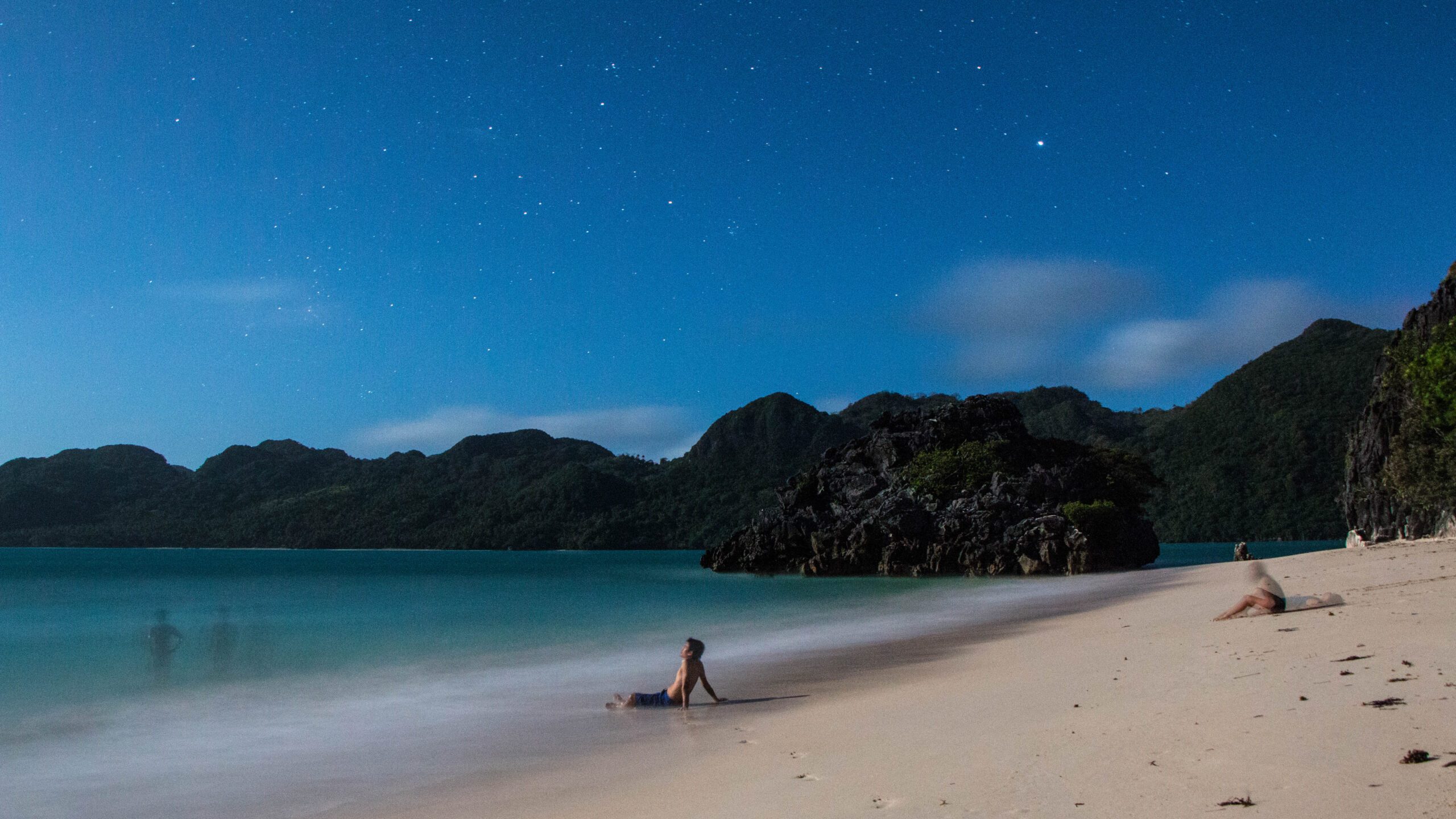
Caramoan Islands, located at the far eastern end of Camarines Sur in Bicol region, has made its name as one of the top destinations in the country thanks to its pristine beach, powdery-white sands, aquamarine waters, and stunning limestone formations. (READ: Head to ‘Borawan’ and these 5 unspoiled PH beaches)
Buzz about it grew back in 2012 when various franchise of reality show Survivor choose the location as set for its challenges. Paving the way for the place’s tourism growth also give opportunity to the local’s additional source of income for providing homestays, transportation, food, and tours – apart from fishing, that is.
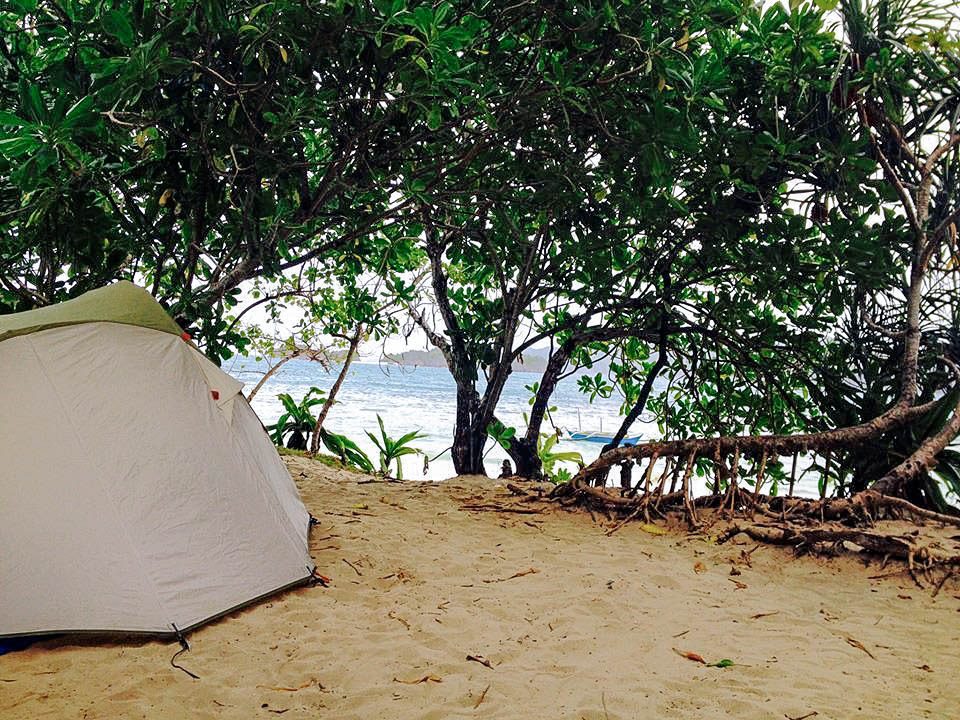
After careful research for itinerary – from getting there, islands to visit, and the possible expenses – our group of 3 decided to challenge ourselves and camped for two days in the islands of Caramoan.
Getting there
Going to Caramoan mainland, there are two options to choose from. First, you can opt to book a flight to Naga City airport in Pili. From there, ride a jeep going to Naga City and another one-hour van ride going to Sabang Port. (READ: German traveler’s PH journey: Going off the beaten path)
Trips going to Guijalo Port from Sabang Port start at 5:30am to 2pm. It takes up to one and a half to two hours, depending on the speed of the boat.
You can also take a night trip bus bound for Naga City from Cubao or Pasay terminals. Travel time takes up to 8 hours.
It should be noted that Guijalo Port has been damaged by typhoons, making it a little difficult for big boats to dock in. Smaller boats are waiting for transfers though. It can accommodate up to 3, and that would also depend on the size of your bags.
Note: We noticed that when we asked about the costs, they would always say “bahala na po kayo” or “it’s up to you” – which made it a little difficult on our part as we did not have any idea what to pay.
Alternately, if you opt to take the bus, there are Caramoan-bound buses from Manila. Also, you may take a bus ride going to Naga City then another bus going to Caramoan. The ride going to Caramoan takes up to 4 hours, and it gets a little bumpy so be prepared with some candy or medicine if you get motion sickness.
From Caramoan terminal, you can hire a tricycle driver who can take you to Barangay Paniman. We took the bus going to Naga City, then to Guijalo Port. On our way back, we decided to try the long and bumpy ride in the Naga-bound bus from Caramoan terminal.
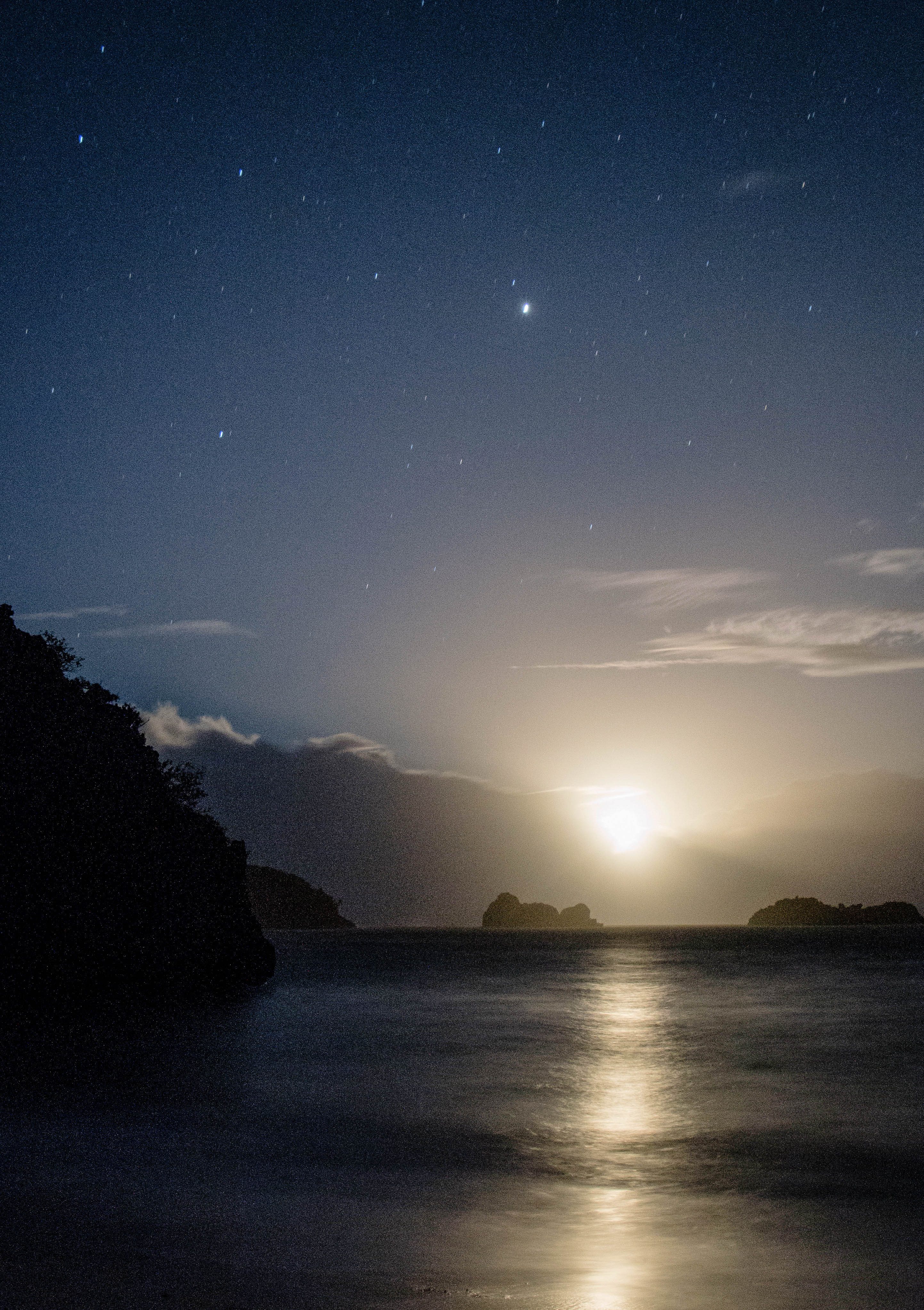
Moonlight and gentle shores
We did not seek a tour operator getting there (to cut expenses as we already had general information on the area by reading blogs and travel forums).
When we got into Guijalo Port, we had our names registered, negotiated with a boatman, and quickly went to our first island.
Our first stop was Matukad Island, the nearest off the coast of the Caramoan Peninsula and from Barangay Paniman. We arrived there past lunchtime, and other tourists had already arranged small tables at the campsite.
Aside from the pure sands and stunning rock formations that greeted us, what lends Matukad Island a sense of mystery is its small lagoon, that is believed by some to be enchanted.
Apart from its small lake, one can also climb near the limestone ledge and have a good view of neighboring islands from the top of its cliff.
If you have enough time, you may also hop across the nearby Lahos and Cagbalinad Islands, which are just adjacent to Matukad – if the tides agree, that is. Island hopping on sundown can be a challenge as bigger waves start to engulf the sea.
Later in the afternoon, we found out that we were the only ones who would be on the island overnight. We were thrilled and ecstatic, of course!
We were glad when a local, who is selling buko, left his balsa for us so we have something to put on our food. There was a clearing near the beach shore which served as the camp site.
Our first night was one experience I will never forget. While feasting on our food under the trees, while the gentle waves served as music in the background, the moon appeared from the clouds.
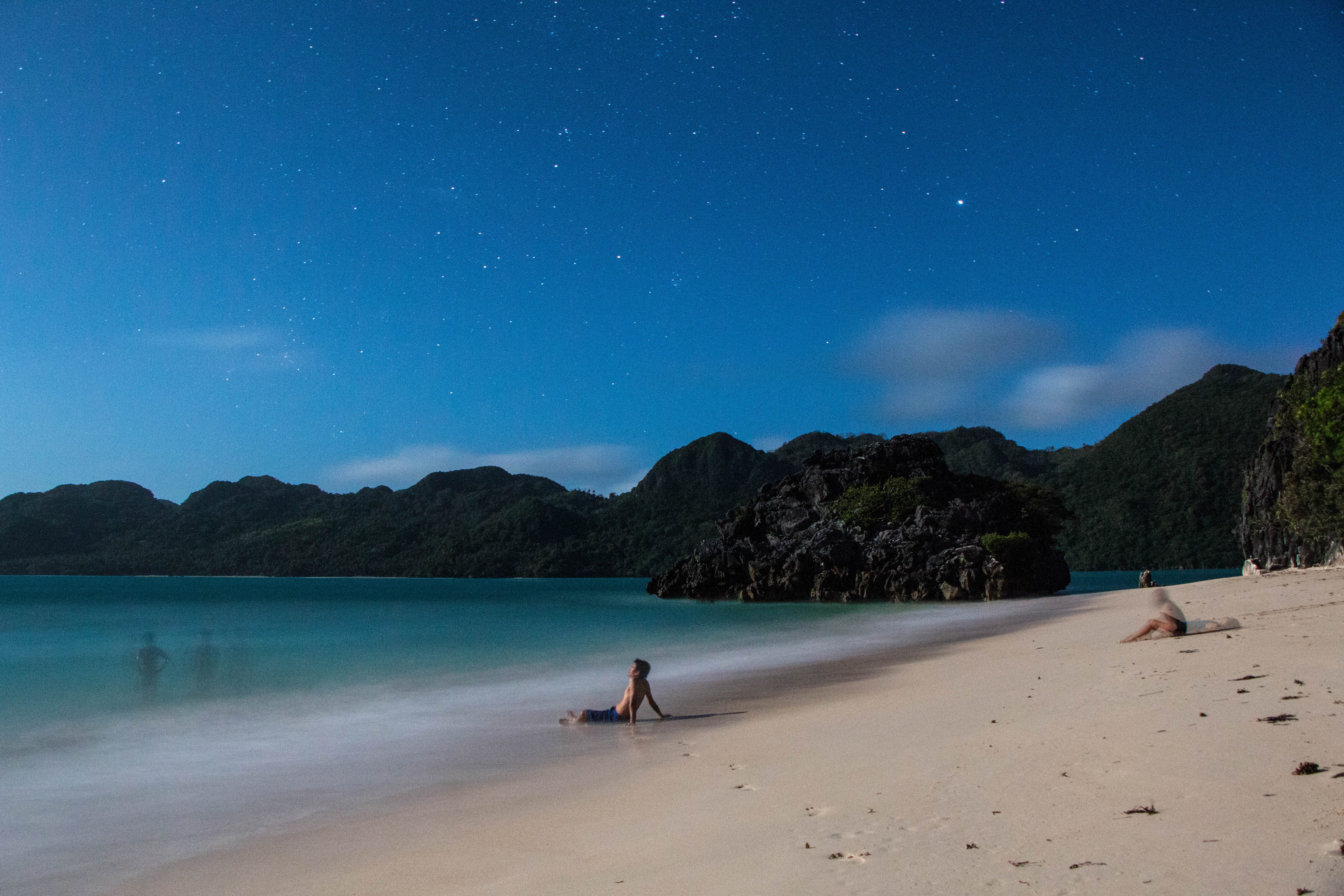
I hadn’t experienced a moonrise before, with the enthralling sight of a sky filled with stars. Magical.
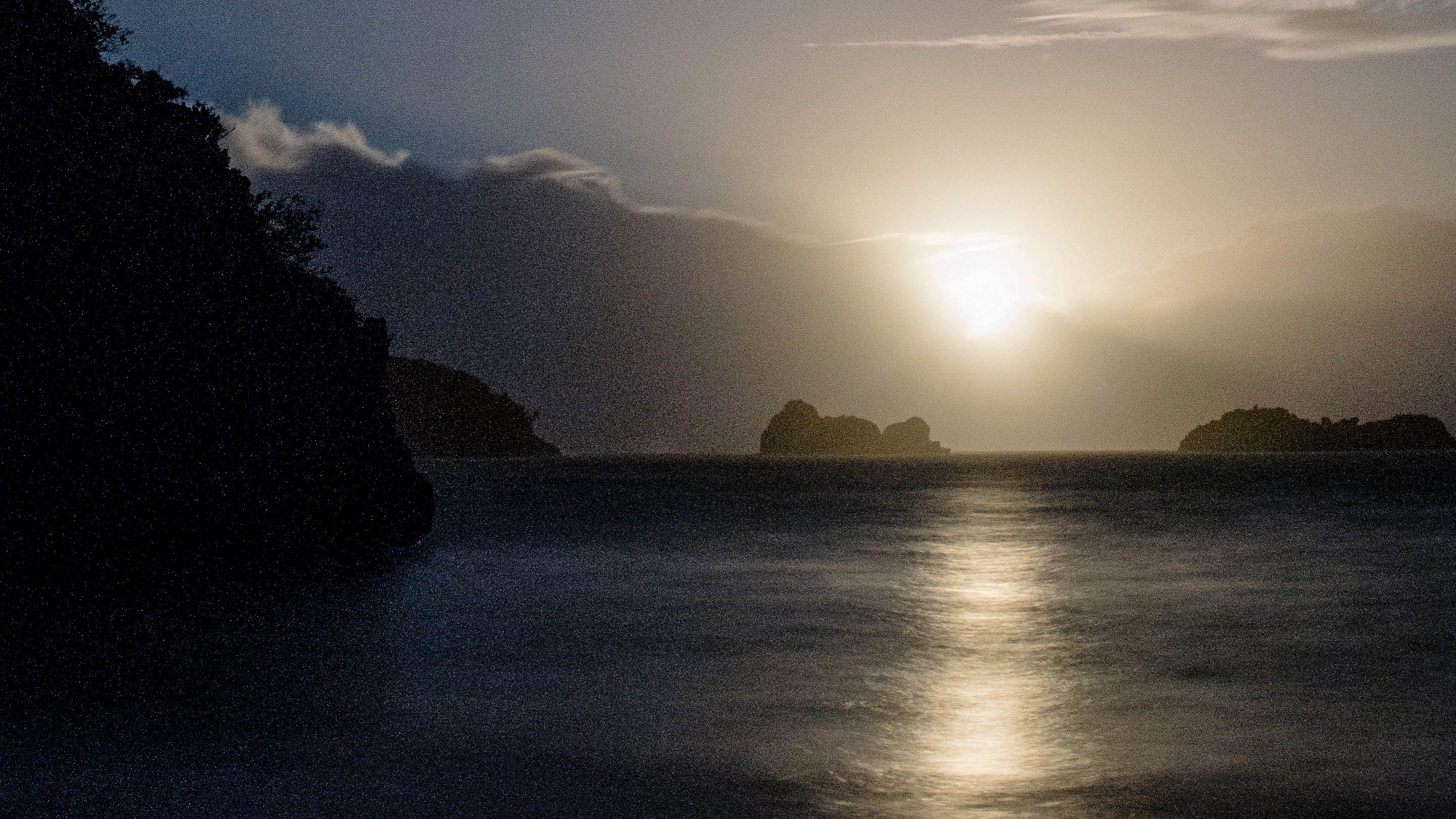
Setting aside the fact that we only had each other that night, we just enjoyed frolicking by the beach, had conversation over gin, chips and liempo leftovers, and took pictures with the starry skies and the midnight blue sea in the background.
Maybe the advantage of being alone in the islands with your friends is that you have the shore all to yourself. However, we know that unfortunate circumstances may happen in the most unexpected ways, so it is better to have the contact details of your boatman with you – or at least, camp there with a number of people.
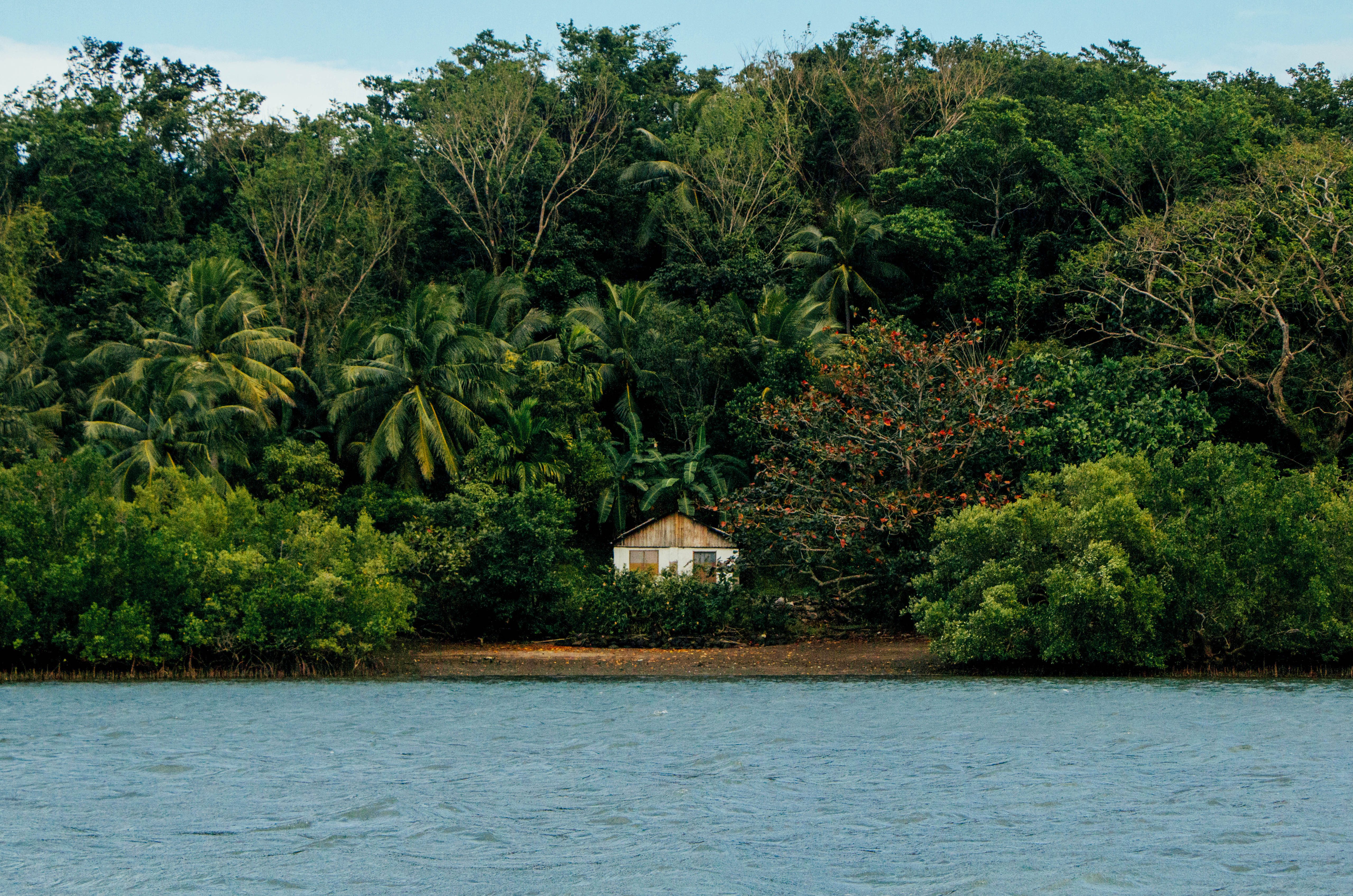
The morning after, we immediately packed our bags for our second day’s adventure, which took us to the farther side of Caramoan Islands.
It took us about 45 minutes of facing big waves before getting in the paradise called Cotivas Island. What we rented was a small boat good for 3-4 passengers. It was so slim that braving the waves was thrilling, though I did worry that our bags might get wet.
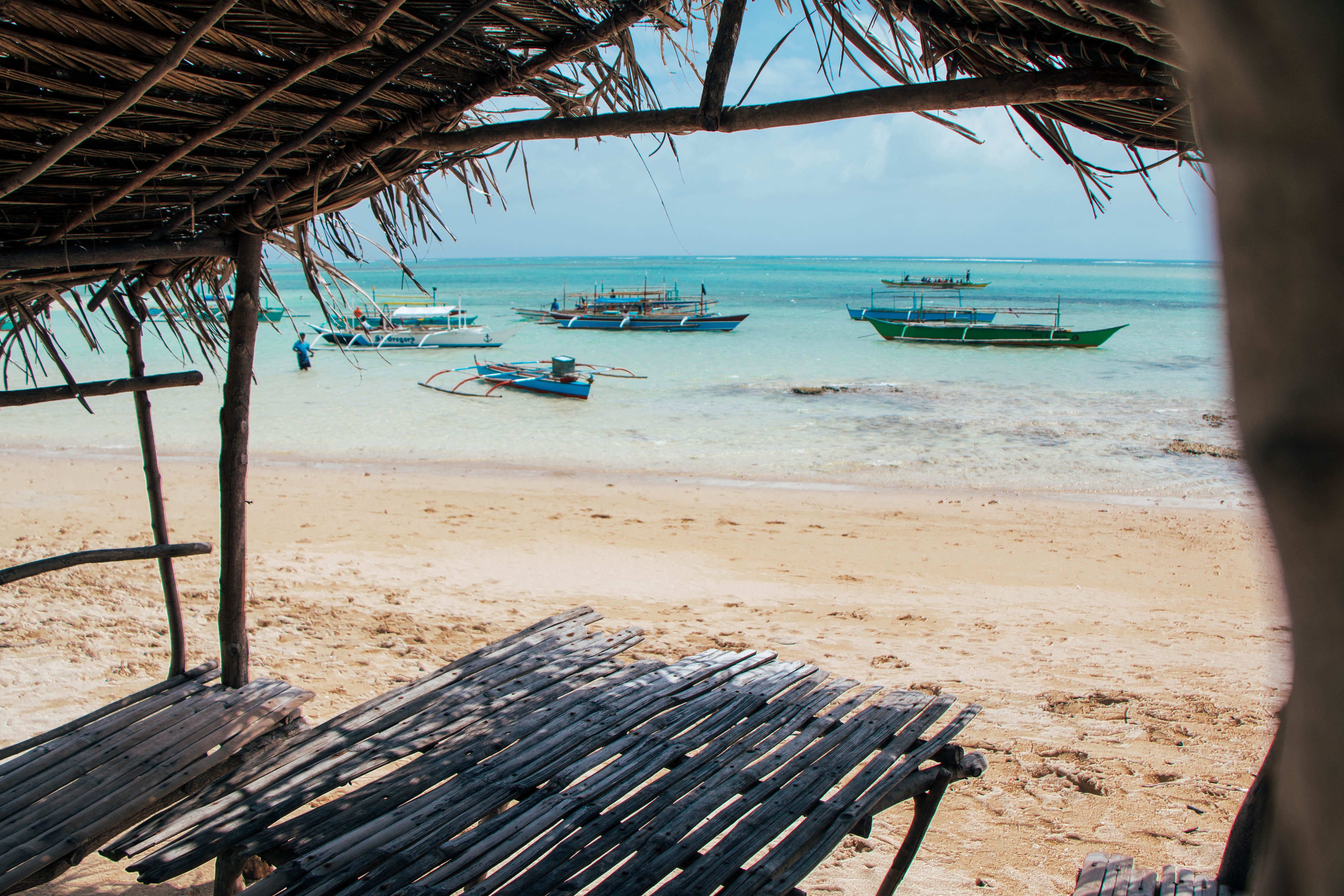
Cotivas Island features a long sand bar. It is one of the islands which has nipa huts perfect for lunch time. Entrance fee here is P50 and if you opt to rent a hut, you can pay P100. I suggest you have your own drinks there or you can request your boatman to bring you some ice or additional food at a given price. Some vendors also offer 1.5 liter of softdrinks and ice for about P100.
When we went there, a company was having their teambuilding, proving that this makes a perfect place to hold celebrations. But one need not worry about privacy, as Cotivas Island has a very long sand bar during low tide. You can enjoy this in solitude while the aquamarine waters rush to your feet, the lush green island as your backdrop.
It also has a long stretch of fine white sand beach on both sides and is shaded with coconut trees.
The next island we visited was Lahuy Island – one of the largest in Caramoan. Its famous Manlawi sandbar, which only appears during low tide, for me, was the best.
The one-kilometer long stretch of sand bar also has a number of floating nipa huts you can rent while the afternoon passes you by.
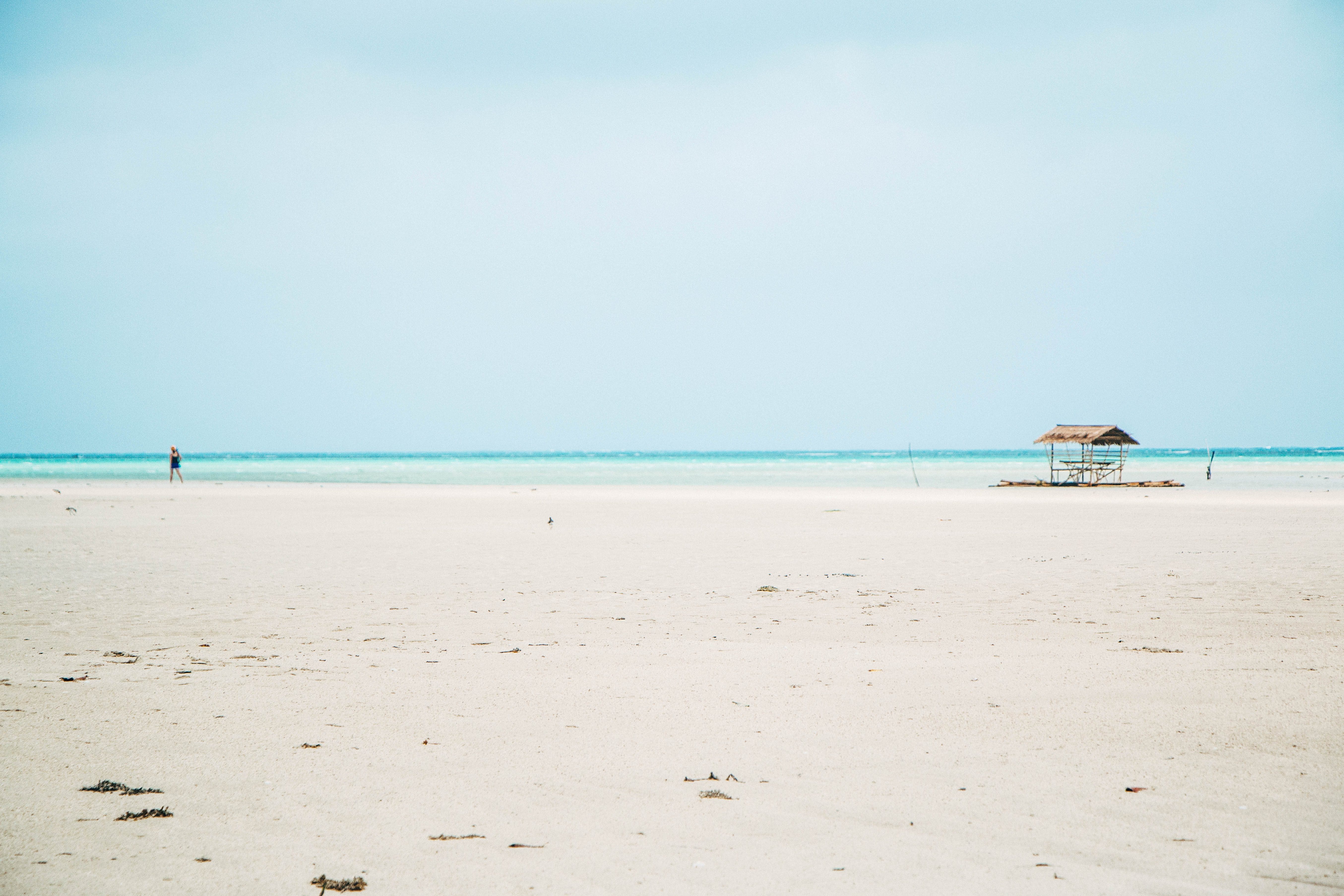
What makes is more stunning is the lush greenery of its mountains. While my friends go on their individual photo walks, I walked barefoot on my own and just savored that feeling of peace and serenity.
Some tourists went frolicking by the seaside, some had their racy photoshoots with the picturesque background, a few couples were holding hands, and a group of tourists was having their selfie moment in their rented nipa hut with their fresh buko juice in hand.
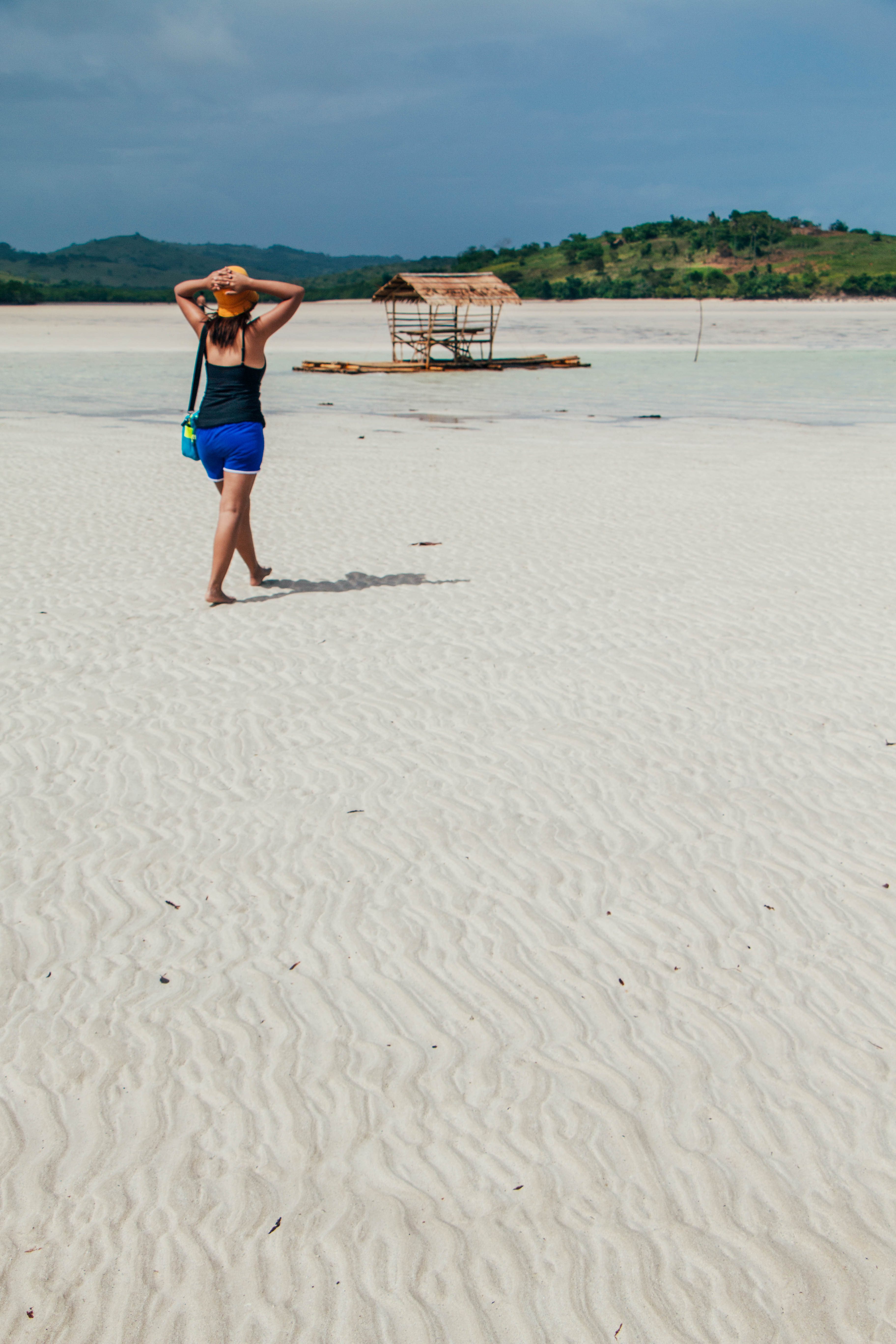
You also have to wait till the afternoon when it’s already high tide so the boat can pass through its rocky seabed. Our boatmen said that it is because the rocks may damage the boat’s propeller.
Our last island, where we also had our second camping night, was Sabitang Laya.
This place is where the Survivors had their immunity challenges.
This triangular-shaped island boasts of two long stretches of beach, and awesome rock formations that remind me of El Nido.
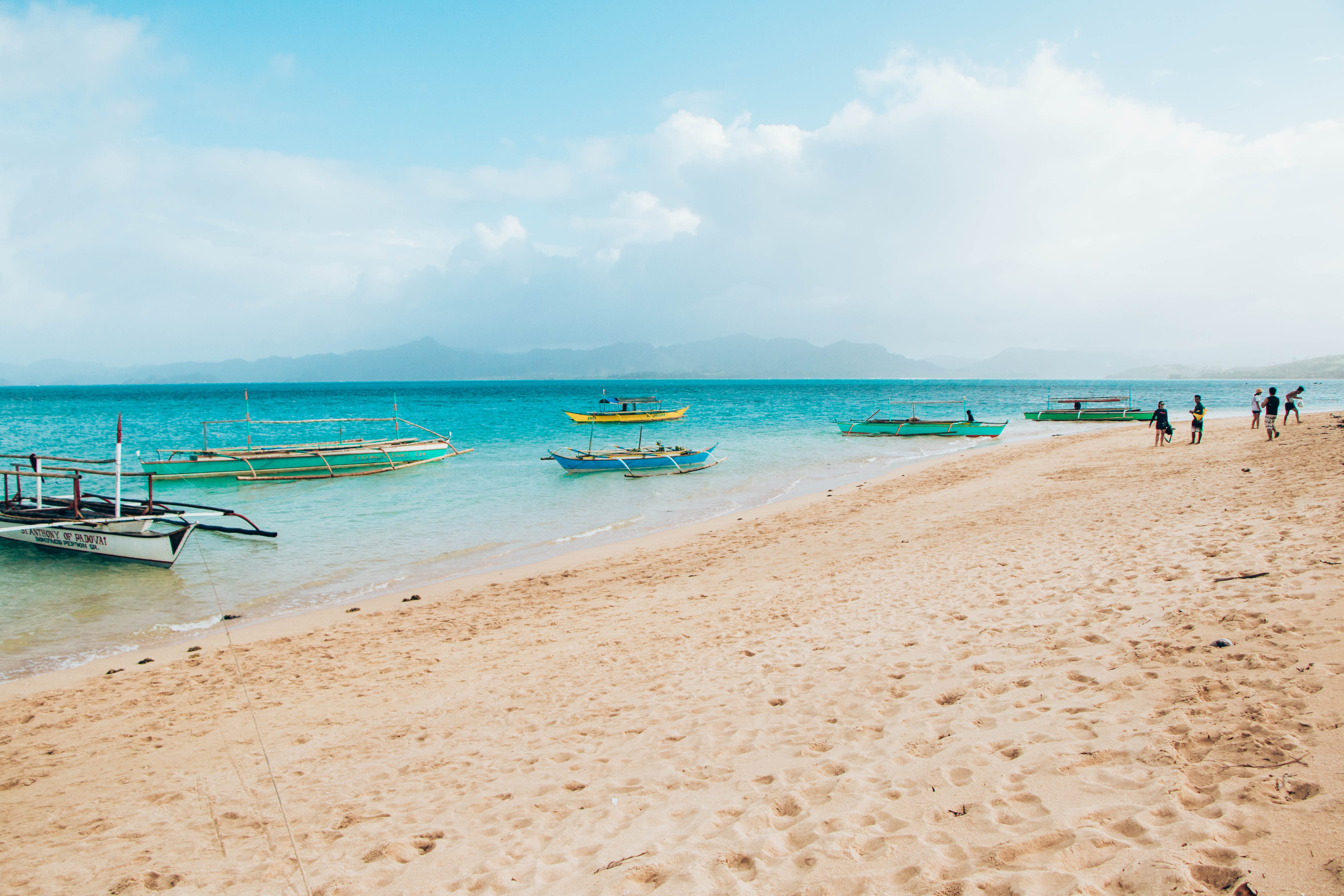
We camped on grassy ground, which had access to both sides of the island’s beach.
For that night, another group of campers were also there but they pitched at the farther end of the island, which was about a kilometer long, so it was still basically the 3 of us again under the starry sky.
We lit our bonfire, cooked the remaining goods we had, and drank some more.
We woke up to a rainy morning after. We knew that our boatmen were fetching us by 8am, so we made the most out of our remaining minutes there. My friend, who is a beach bum himself, jogged his way to the other side of the island. We also plunged into the cold blue waters, and later had coffee while waiting.
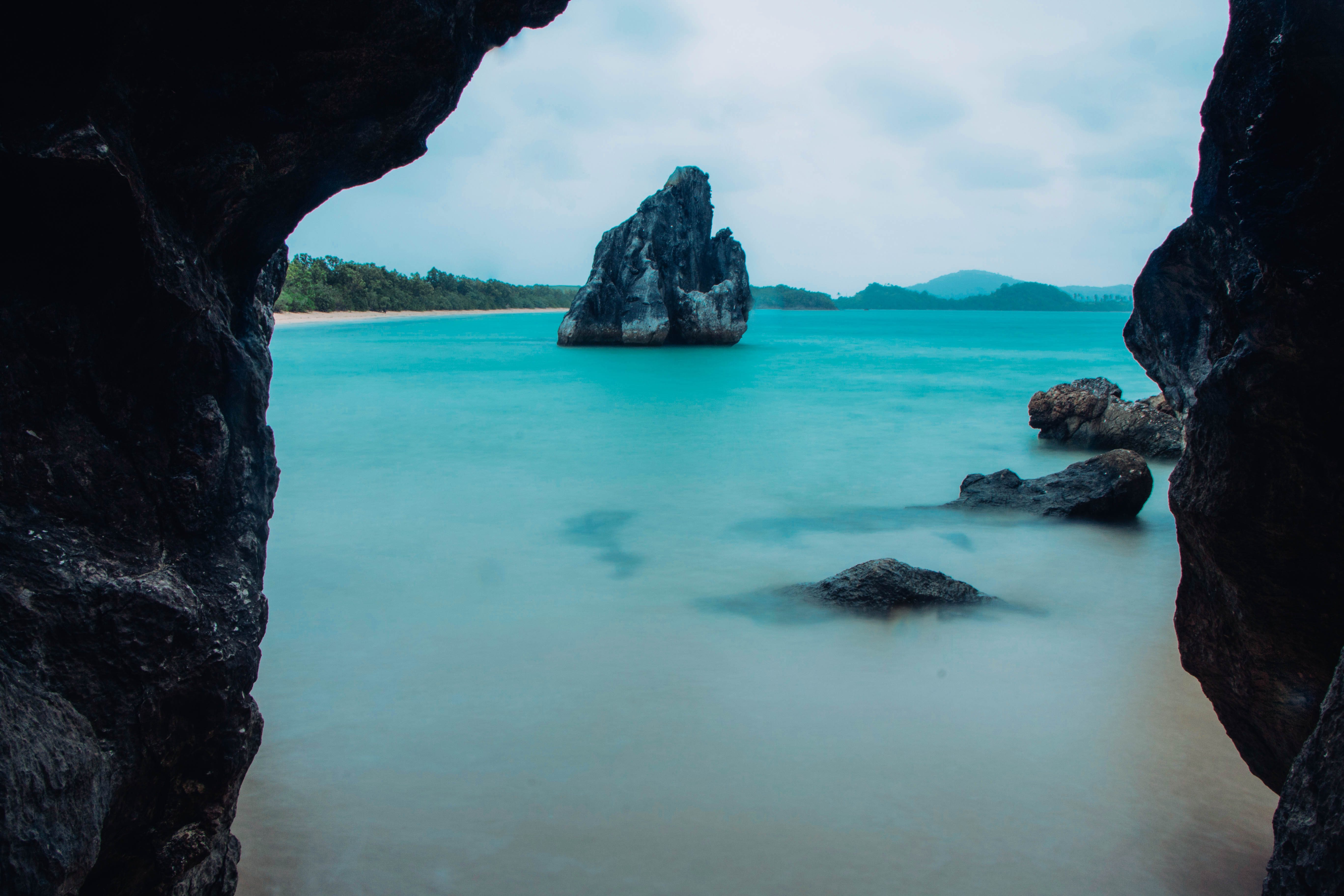
First time ponderings
Camping is not the easy romp we imagine it might be in nice pictures.
I had gone on a number of camping trips before in the mountains but setting up by the beach is something different.
Here are some of my tips for first-timers:
1. First aid kit
While you should have a checklist of the basics, a tent, food, and clothes all enough for two days, remember that first aid kits are a must.
While frolicking by the beach one our first night in Matukad Island, I tripped after a huge wave crashed on the shore, leaving my sandy knees bloodied. We had our first aid kit so I was not really worried. I just had to brave the pain of putting alcohol on my wound. Also pack an emergency blanket just in case.
2. Protect your things
Make sure to always zip up your tent when you go by the beach. Aside from taking precautionary measures for your belongings, it also keeps it safe from insects and other animals.
It is inevitable that island hopping comes with its own risks for your belongings, but bringing in a couple of Ziplocs and extra plastic bags can save you a lot of worry.
While you should always be ready with Ziplocs for your gadgets and money, I suggest you also bring a large ground sheet (which you also use for your tent) to cover up your bags while island hopping in case it rains.
3. Leave no trace
And since it is camping for two nights – without any comfort rooms for campers in a remote and virgin island – make sure you manage your human waste well.
Set up a cathole site away from the campsite and from the beach shore, preferably into the woods.
You can also bring an extra gallon or two of clean water for a quick shower. And of course, do not leave trash on the islands.
4. Don’t forget the food
A friend once said that you will never starve if you are backpacking with a girl. I say yes, as I will never let myself go hungry while on an island. I know I will not really enjoy the experience when there is no food. Make sure you pack some fruits, plus have your rice and water secured for two days of camping, and have some bread and some coffee mix on hand. Imagine having your hot coffee in the morning or in the afternoon, with the sun setting or the waves crashing into the shores as your view.
When combined, the tours should be P4,000 (Tour A: P1,500; Tour B: P2,500) but since we went there for two days camping and our boatmen had to return back and forth from Barangay Paniman to fetch us from the islands, we paid an additional P2000.
Better if you are in a bigger group, as you can divide this amongst yourselves and be able to save up.
Camping is thrilling, yes. Be it at the summit or by the sea, when the experience is shared with the people you are comfortable with, the experience will be unforgettable.
Enjoy the island life for two nights, and embrace nature away from the buzzing city crowd and noise. Stay safe and sound always!
Sample Budget
- Manila to Naga: P800
- Naga to Sabang Port: P100
- Sabang Port to Guijalo Port: P120
- Food supplies: P350 (P1,000/3)
- Mini boat ride: P25 (P50/2)
- Environmental Fee: P30
- Tricyle to Brgy. Paniman: P100 (P300/3)
- Boat Rental: P2,000 (P6,000/3)
- *Two days island-hopping
- *Two nights camping
- *Shower fee in homestay
- *Paluto
- Cotivas Island Entrance Fee: P50
- Tricycle to terminal: P70 (P200/3)
- Caramoan Bus to Naga: P230
- Naga to Manila: P800
- Estimated total expense/person: P4,675-5,000
– Rappler.com
Gelyka Ruth R. Dumaraos is a 24-year-old AB Journalism graduate of University of the East-Manila. She writes with FAME Publishing Inc., and blogs her thoughts and travels at Musings and Pathways.
Excited to experience Caramoan yourself? Take a look at our coupons for the best deals on travel.
Add a comment
How does this make you feel?
There are no comments yet. Add your comment to start the conversation.